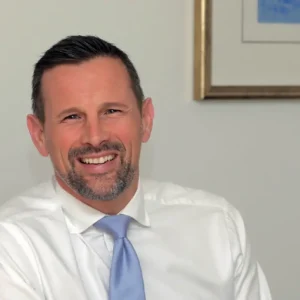Telematics systems used to exist solely for locating vehicles. You had one because you needed to know where your staff and assets were – and that was about the size of it.
The technology has progressed no end in the past few years though, to the point where the mapping element is almost falling by the wayside.
“We have customers who don’t even look at a map any more. It’s moved on much further than that,” says Alex Rothwell, chief technology officer at Masternaut.
These days, the skill is in gleaning data from the vehicle and converting it into something meaningful for fleets.
“Companies have been developing their technology to derive information directly from the vehicle,” says Martin Bramwell, managing director of In-Car Cleverness. “Fault codes, RPM and speed are now reasonably widespread, and that trend towards additional data streams will continue.
“Applications will drive the way in which [the] technology is employed. For instance, a driver with a telematics unit might be contacted by his dealer to tell him of a forthcoming service or fault that has just occurred and been transmitted to the dealer’s CRM [customer relationship management] system.”
Most providers now consider the physical black box a necessary evil and, given the choice, they’d ditch it and save on the fitting time and cost. Smartphone apps and vehicles that can receive the service without the need for aftermarket components are much more in vogue.
“We’d like to get rid of the black box because the truth is it’s a barrier for people adopting it,” says Rothwell. “Over time, more and more vehicles will have onboard units [fitted as standard], and we do see some customers starting to prefer smartphones – but that’s good and we embrace it.”
“The hardware won’t be the game changer,” says David Lee, head of customer experience at leasing firm Hitachi Capital, which offers a telematics service in conjunction with the RAC. “The way we connect vehicles to other vehicles, the world around it and the people in it, in increasingly complex ways is much more likely to drive mobility innovations.”
“The future is in tailored services,” adds Greg Donovan, senior implementation manager at RAC Telematics. “Everyone is looking to achieve cost reductions, but exactly what you are looking for depends on your business. A car rental firm might only be interested in mileage and accidents so they can control costs. A commercial fleet, on the other hand, might be interested in a wide variety of data.”
Lee and Donovan claim that benchmarking functions are the way forward, whereby running costs such as fuel and SMR, as well as driver performance, are scrutinised.
“As systems become more sophisticated and big data more widely available, we can see benchmarking becoming a valuable function,” says Donovan. “If you’re getting your servicing done at £1000 per year, how do you know that’s good? Are your drivers getting the same miles per gallon as the industry standard? Where does the benchmark of a particular vehicle type sit amongst other vehicle types you might also be able to use in your business?”
Lee adds: “Data and the integration of technology will be at the centre. “This means more immersion in app technology with smartphones that positively reinforce better driving behaviour. Perhaps the future could see every aspect of individual driver performance benchmarked in live national league tables to throw in a bit of competition.”
As much as the providers want it gone, the black box hasn’t had its day just yet. Much like electric car charging hardware, the snag is in the lack of an industry-wide standard system.
“I wouldn’t overplay [the demise],” says Rothwell. “A lot of companies have mixed fleets, so there’s standardisation across multiple units, and many customers still prefer a secure, professional install, which you obviously don’t get with a smartphone. It’s not a rapid trend, it’s just a gradual thing that we need to work with.”
The data ownership element also poses its fair share of issues, as Bramwell explains: “How is [data] collected, who stores it and who owns it? It’s a topic that will ensure a plural future for telematics devices; in much the same way there are several mobile phone network providers, there’ll be many telematics providers [and] therefore, a continuing need for black box devices in the immediate future and, likely, beyond that.”
Fleet attitudes are changing
Away from the physical fitting, attitudes towards telematics have helped it along.
“Privacy was a big issue, and still is to a certain degree, but businesses and drivers are [now] a little more accepting,” says Tracker’s sales director David Wilson.
“The way businesses use telematics has changed; it is now more about finding answers to a problem, rather than deciphering vast amounts of data to identify the problem. We are also seeing telematics data being used more to analyse motor accidents, where insurers believe it may be a ‘crash for cash’ case.”





